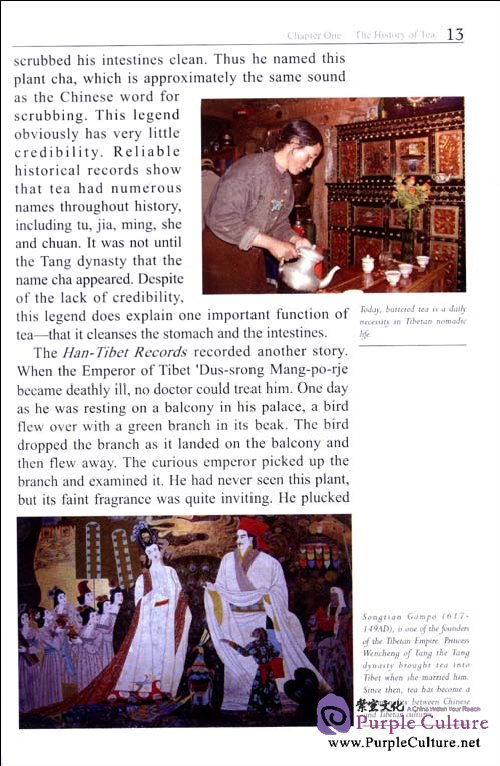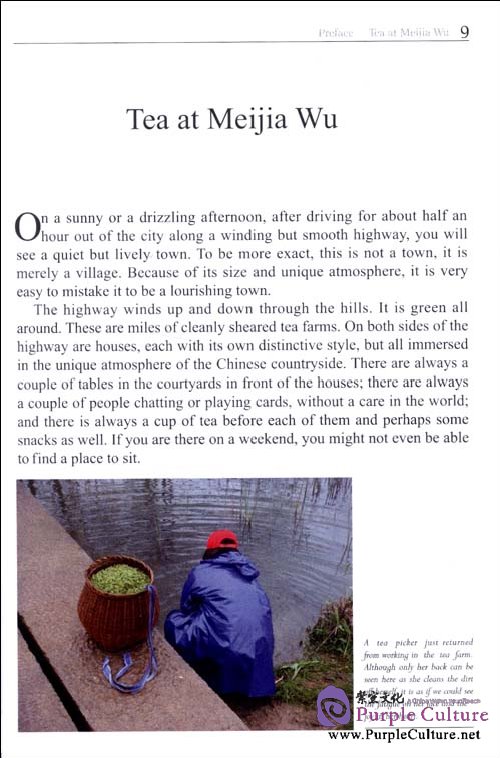Sample Pages Preview


During the Tangdynasty about 1400 yearsago, people realized thatthe sweet aroma of teacould be better preservedwithout compressing it into solidblocks. Therefore, fresh tea leaveswere baked directly after steaming and left scattered.This is the now common loose leaf tea. In the severalcenturies since, loose leaf tea and cake tea coexistedand competed for the market. However, cake tea hadalways been more popular than loose leaf tea, until in1391 the Hongwu Emperor of the Ming dynasty, ZhuYuanzhang, decreed that loose leaf tea was to replacecake tea as the imperial tributary tea.
Although the aroma of the tea was better preservedby the loose leaf tea technique, it was not as rich andstrong as people would like it to be. Thus appearedthe roasting technique. Tea leaves were roasted in acauldron over dry heat. Roasting can fully extract therich aroma from the tea. This is how green tea is madetoday. As we can see, tea making techniques evolvedthrough centuries of development and modification. Through the long evolution of tea makingtechniques, the Chinese have always paid extraattention to the exploration of the aroma and flavourof tea. They discovered that tea's substance could bedifferently affected by varying degrees of oxidation.From there, a range of new varieties of teas developed,from unoxidized, semi-oxidized, to fully oxidized teas.
Preface
on a sunny or a drizzling afternoon, after driving for about half anhour out of the city along a winding but smooth highway, you willsee a quiet but lively town. To be more exact, this is not a town, it ismerely a village. Because of its size and unique atmosphere, it is veryeasy to mistake it to be a lourishing town.
The highway winds up and down through the hills. It is green allaround. These are miles of cleanly sheared tea farms. On both sides of thehighway are houses, each with its own distinctive style, but all immersedin the unique atmosphere of the Chinese countryside. There are always acouple of tables in the courtyards in front of the houses; there are alwaysa couple of people chatting or playing cards, without a care in the world;and there is always a cup of tea before each of them and perhaps somesnacks as well. If you are there on a weekend, you might not even be ableto find a place to sit.

